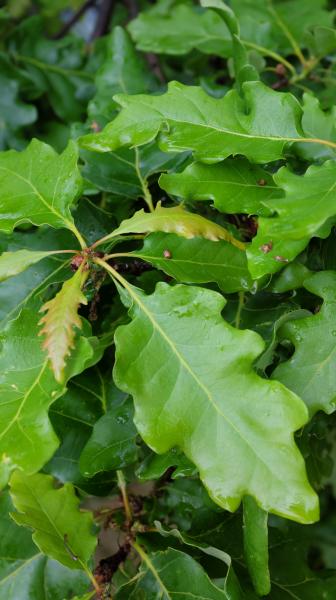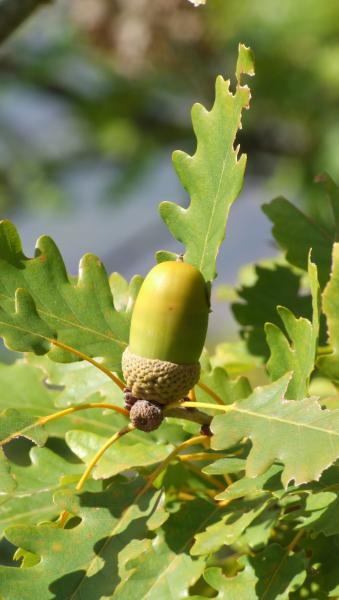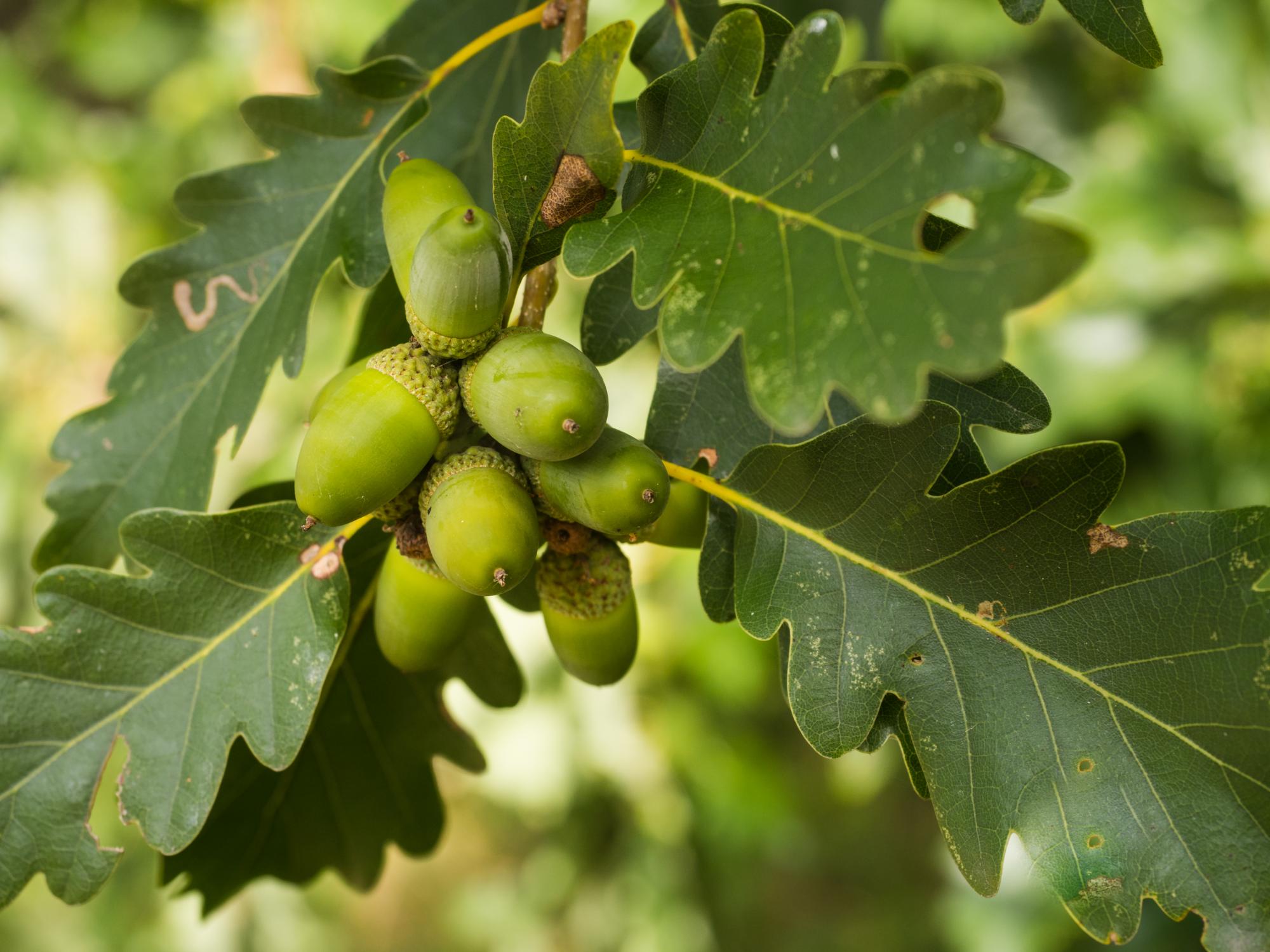
Species Name: Quercus petraea
The sessile oak gets its name from the word ‘sessile’, meaning “fixed in one place, immobile”. This is because, unlike the English oak, its acorns are attached directly to the branch at the base. These tall trees can grow up to 40m tall and are fairly common throughout the UK and Ireland.
The sessile oak’s bark is greyish-brown in colour and has a very similar appearance to the English oak’s bark. Old trees can have huge trunks which can grow up to 3m in circumference.

The leaves are dark green with regular rounded lobes. Sessile oak leaves are narrower than the English oak’s leaves.

The easiest way to tell a sessile oak apart from its cousin is by looking at the acorns. Sessile oak acorns are fixed to the branch at their base, whereas the English oak’s are attached by a stalk. The acorns are relatively similar in size and shape.

Sessile oak trees are common throughout the UK and Ireland, found in most semi-natural woodland. They can be found all over the Heart of England Forest.
Druids used sessile oak branches to make staffs. They would use these staffs when celebrating the mid-winter and mid-summer solstices. The oak represents power and strength, which is recognised in most mythologies.
The bark was once used to make barrels to store wine, the wood of the sessile oak gave the wine a distinct flavour. The bark was also used for tanning leather. Due to its antioxidant properties, sessile oak was used to treat swelling and inflammation of the skin, as well as diarrhoea and other illnesses.
The sessile oak is home to a huge variety of wildlife including mosses, lichens, liverworts and over 250 species of insects. Birds and bats will use the sessile oak’s deadwood for nesting. The tree’s acorns also provide food for jays, badgers, and the rare red squirrel in some northern woodlands. Purple hairstreak caterpillars will also feed on the leaves.
The sessile oak is the official national tree of Ireland and is sometimes called the “Irish oak”.
3% of the trees we are planting in the Forest this season are sessile oak trees.




